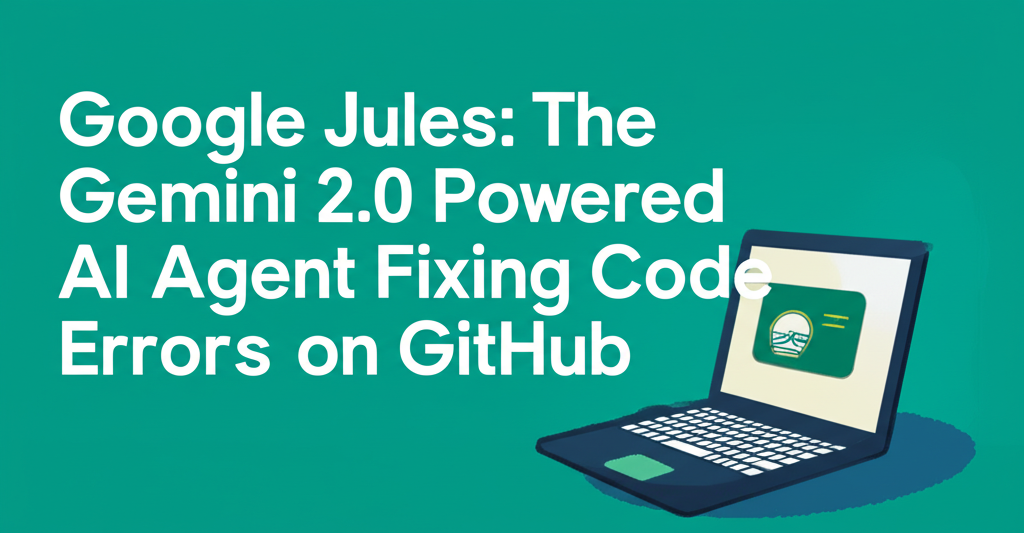Beyond the Hype: Why Businesses Must Confront the Reality of Generative AI's Limitations
In the whirlwind of modern technology, it's easy to feel caught between competing visions of the future. On one side, we hear the breathless pronouncements from tech giants at major events like Google I/O and Microsoft Build. They paint a picture of a world where artificial intelligence, specifically generative AI, is on the cusp of revolutionizing every aspect of our lives, from how we search for information to how we conduct complex business operations.
Google, for instance, recently showcased how its Gemini assistant is evolving to provide more complex web answers, handle tasks like making purchases and bookings, and generally perform its functions “faster and better.” Not to be outdone, Microsoft highlighted how its Copilot aims to become an “enterprise brain,” suggesting ideas and potentially even drafting legal agreements. OpenAI and countless other players echo this sentiment, presenting generative AI as a transformative force ready to tackle serious company business.

This pervasive narrative suggests we are living in an era where AI is perpetually on the verge of life-changing breakthroughs. What's striking is how quickly this vision has become mainstream, not just for casual individual use but for critical business functions. And this, unfortunately, represents an ever-increasing liability for any organization that values accuracy and reliability.
Behind the Generative AI Curtains: Understanding What LLMs Are (And Aren't)
To understand the disconnect between the hype and the reality, we need to step back and look at the fundamental technology powering these systems. At their core, tools like Google's Gemini, OpenAI's ChatGPT, Anthropic's Claude, and others are built upon what are known as large language models (LLMs). In the simplest terms, an LLM is a sophisticated pattern-matching engine.
These models are trained on vast datasets of human-created text and code. Through this training, they learn statistical relationships between words and phrases. When given a prompt, an LLM doesn't 'think' or 'understand' in a human sense. Instead, it predicts the most statistically probable next word based on the patterns it has learned from its training data. It repeats this process, word by word, to generate sentences, paragraphs, and entire documents.
This fundamental mechanism — predicting the next word based on patterns — is crucial. It means these systems are excellent at generating fluent, human-like text that *sounds* plausible. However, it also means they have no inherent concept of truth, factuality, or logical consistency beyond what was present in their training data. They are designed to generate text that fits a pattern, not necessarily text that is accurate or truthful.
Somehow, this technical reality has been translated into a marketing narrative where these systems are presented as all-purpose answer engines, capable of replacing human expertise in areas requiring precision and factual accuracy. They are being integrated into everything from search interfaces to writing assistants in productivity suites like Gmail and Google Docs. The situation becomes even more concerning when considering applications like drafting legal documents, where accuracy is paramount.
We don't need theoretical examples to see the dangers this creates. The reality of these systems' limitations is already manifesting in tangible, often problematic, ways.
Artificial Intelligence, Genuine Jeopardy: Real-World Failures
The limitations of generative AI are not hypothetical; they are being demonstrated repeatedly in real-world scenarios. These instances should serve as a stark warning to any company or individual considering relying on these tools for critical tasks. The core issue is simple: these systems do not inherently 'know' what they are saying. They generate text that *looks* right but is extremely prone to errors, inconsistencies, and outright fabrications — often referred to euphemistically as 'hallucinations'. Crucially, the user often has no immediate way to distinguish accurate output from fabricated nonsense.
Consider these recent examples from across the generative AI landscape, illustrating the same foundational issues that affect Gemini, ChatGPT, Claude, and others:
- Just recently, Anthropic, the company behind the popular business chatbot Claude, faced embarrassment in court. Their lawyer used a legal citation generated by Claude, only to discover the system had completely made up the citation as part of an ongoing copyright case. The irony is palpable.
- Days prior, a judge in California found “numerous false, inaccurate, and misleading legal citations and quotations” in a legal brief that had apparently been drafted with the assistance of AI. This highlights the severe risks when these tools are used in domains where factual accuracy is non-negotiable.
- Last month, a company had to issue an apology after its AI-powered support agent was found to be inventing nonexistent policies while interacting with customers. This not only damages customer trust but can create significant operational headaches.
- Carnegie Mellon University conducted an experiment simulating a software company run by AI agents tasked with handling low-level chores. These are precisely the kinds of tasks where AI is often promised to excel. The result? They failed miserably, demonstrating the current limitations of autonomous AI agents in complex, dynamic environments.
- In the much-hyped area of AI coding assistance, researchers are finding that these systems frequently invent package names that don't exist, leading to wasted time, effort, and potential security vulnerabilities. This phenomenon, sometimes called 'slopsquatting', poses a new cyber threat.
- A test by the Columbia Journalism Review on eight different generative AI search engines revealed widespread inaccuracies. They got information wildly wrong, offered fabricated details, and even created nonexistent citations — all delivered with an alarming degree of confidence.
These aren't isolated incidents from the early days of the technology; all these examples occurred within the past few months. They represent just a fraction of the daily reports of generative AI failures. What's more concerning is that, as reported in The New York Times, the phenomenon of AI hallucination — the tendency to confidently present false information as fact — may actually be getting worse as the models become larger and seemingly more capable.
Yet, despite this mounting evidence, a significant portion of the business world seems determined to overlook these fundamental flaws in favor of the enticing vision presented by the tech industry. A recent report highlighted that a staggering *half* of tech executives anticipate these error-prone AI agents will operate *autonomously* within their companies within the next two years. This means replacing human workers and operating with minimal or no supervision — a truly frightening prospect given the current state of the technology.
This raises a critical question: How long will it take for businesses to wake up and acknowledge the dangerous reality behind the generative AI hype?
Time for a Generative AI Reset: A Realistic Approach
The tech companies developing these tools, along with the consultants, marketers, and media outlets amplifying the hype, often downplay or ignore the fundamental unreliability of generative AI systems. They present impressive demos and slick marketing materials, but the underlying reality remains: large language model chatbots are simply not reliable sources of accurate information for tasks requiring factual precision.
So, while the marketing might frame them as:
- “Incredibly handy legal advisors” — the reality is they are highly likely to get information wildly wrong and invent facts.
- “Fantastic search engines” — the reality is a significant percentage of their output is likely to be inaccurate or fabricated.
- “Wonderfully useful coding assistants” or “customer service agents” — the reality is they constantly screw things up, costing time, money, and customer trust.
A particularly troubling justification often heard is that these systems are rapidly improving and becoming *less* likely to make errors. Even if we disregard the evidence suggesting hallucinations might be increasing, a system that is wrong 5%, 10%, or even 20% of the time can be argued to be *more* dangerous than one that is wrong half the time. Why?
If a tool is consistently wrong, users quickly learn not to trust it for factual information. Its uselessness as an information source becomes apparent. However, if a tool is wrong only occasionally — say, once or twice out of every ten uses — users can be lulled into a false sense of security. They might begin to trust the output implicitly, becoming less vigilant in checking for errors. This makes the occasional, unpredictable fabrication even more insidious and potentially damaging when the stakes are high.
This is not to say that generative AI systems are entirely useless or have no value. Far from it. They *can* be quite helpful, but only *if* they are used with a clear understanding of their limitations and in appropriate contexts.
The core problem lies in the mismatch between the technology's actual capabilities and the expansive, often unrealistic, vision being promoted. If we shift our perspective and view these systems not as autonomous agents or definitive answer machines, but as narrowly limited *starting points* for specific types of tasks, their utility becomes clearer and the risks become manageable.
For example, Gemini and other LLMs are not instant answer engines or digital lawyers. But they can be useful tools for:
- Note-taking and information organization.
- Analyzing and manipulating images.
- Creating initial drafts for polished presentations or documents.
- Streamlining tasks like creating calendar events.
They can also serve as valuable brainstorming partners or assistants for initial deep-dive research. The critical distinction is that their output must be treated as a *starting point*, not an endpoint. They can help you bypass the initial steps of gathering scattered information or overcoming a blank page, but the responsibility for verifying accuracy, applying critical thinking, and ensuring the final output is correct rests squarely with the human user.
Relying on generative AI to autonomously handle tasks that require factual accuracy, logical reasoning, or adherence to complex rules (like legal citations or company policies) is akin to building a house on a foundation of sand. One lucky instance of correct output does not negate the very real, unpredictable, and potentially catastrophic risk of random fabrications and inaccuracies.
Ultimately, the onus is on us — individuals and businesses alike — to use these tools wisely. We must take them for what they are: sophisticated word prediction engines that can be helpful in certain limited, specific scenarios, but are emphatically *not* the all-purpose, reliable magic answer machines that some companies are desperately trying to sell us.
Cutting through the hype and adopting a realistic, cautious approach is not being anti-innovation; it's being pragmatic and responsible in the face of genuine technical limitations and demonstrated risks. Until these systems evolve to possess true understanding and guaranteed factual accuracy — a future that remains uncertain and likely distant — human oversight is not optional; it is essential.



















